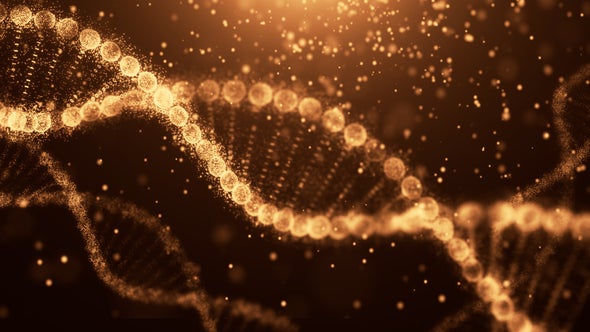Many biologists assume that bizarre quantum phenomena play a relatively negligible role inside the cell. A recent theoretical analysis of the chemical bonds holding DNA together, however, suggests that these effects might occur far more frequently than once thought—and act as a major source of genetic mutations.
Researchers led by Louie Slocombe of the University of Surrey in England focused on the molecular “bases” that make up the rungs linking DNA's double strands and the hydrogen bond, formed with a proton, that holds the two sides of these rungs together. Their theoretical model incorporated the quantum effects that allow a proton, bound to the base cytosine on one strand, to spontaneously “tunnel” and hook up to the guanine base on the other.
Such an altered base pair, known as a tautomer, can quickly jump back to its original arrangement. But if the proton does not make it back by the time the two DNA strands separate—the first step of DNA replication—the cytosine might bind to a different base, adenine, rather than guanine. This unnatural pairing creates a mutation.
Scientists have known since the discovery of DNA's structure in the 1950s that base pairs can, in theory, produce tautomers. But they thought that quantum tunneling would have little relevance as a mutation generator because of the extraordinarily short lifetime of these physical states.
The researchers' model reported in Communications Physics, however, suggests that the quantum process happens so often that at any given time hundreds of thousands of tautomers may be present in a cell's genome. So even if these structures are fleeting, so many pop into place so frequently that they become a potentially rich source of mutations. This model suggests that quantum-mechanical instability “may well play a far more important role in DNA mutation than has hitherto been suggested,” the authors write. The team wonders how specific repair mechanisms deal with such quantum errors, given that the predicted number of tautomers is thousands of times greater than the total number of mutations in each human generation.
This work could potentially “pave the way for investigating various quantum-tunneling processes in DNA and the cell membrane that may have fundamental importance in molecular biology,” says Gizem Çelebi Torabfam, a scientist at Sabancı University Nanotechnology Research and Application Center in Istanbul, who has studied quantum tunneling but was not involved in this work. “Also, we should consider ultrafast transfer between two DNA bases in the pathogenesis of common diseases.”


